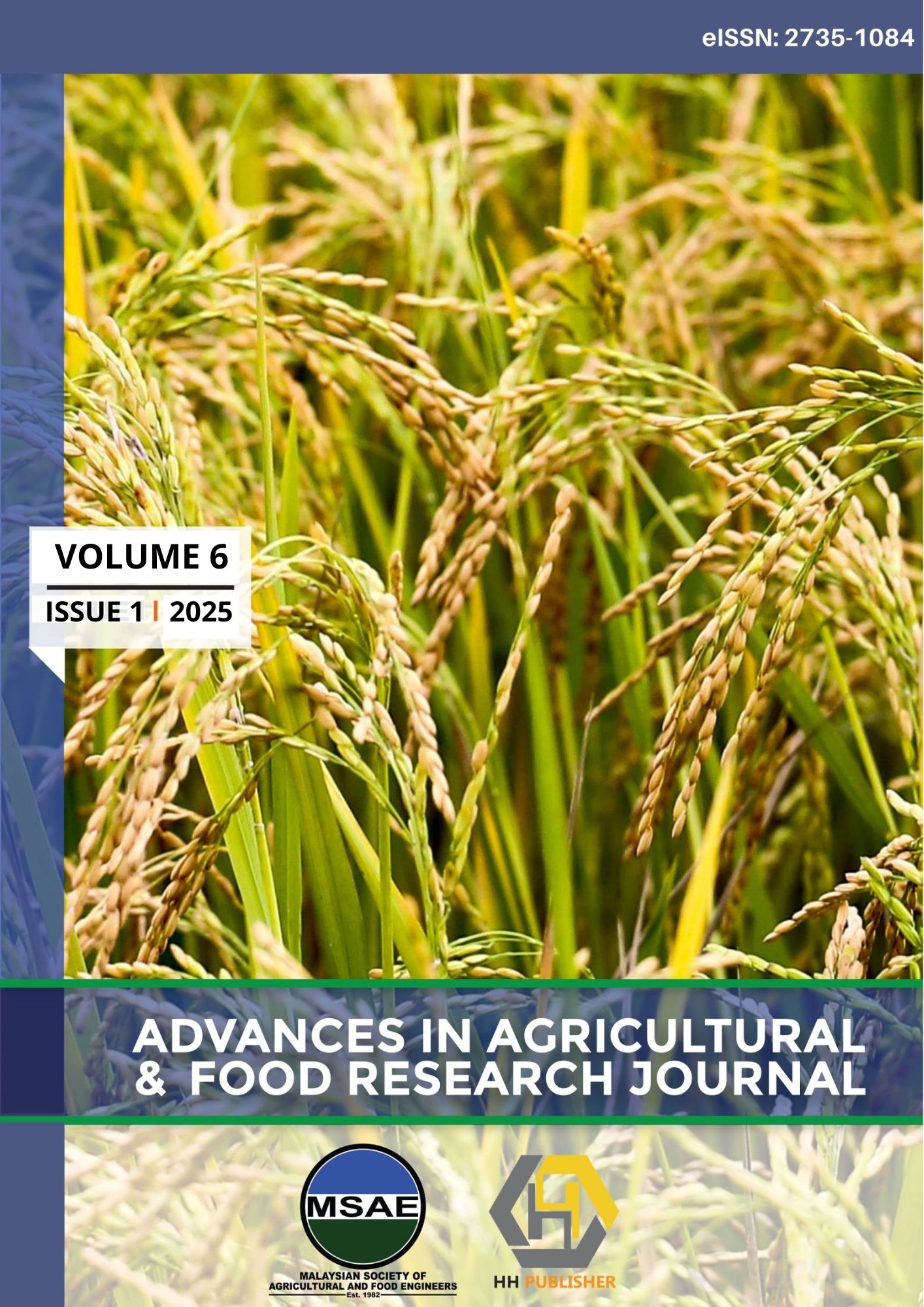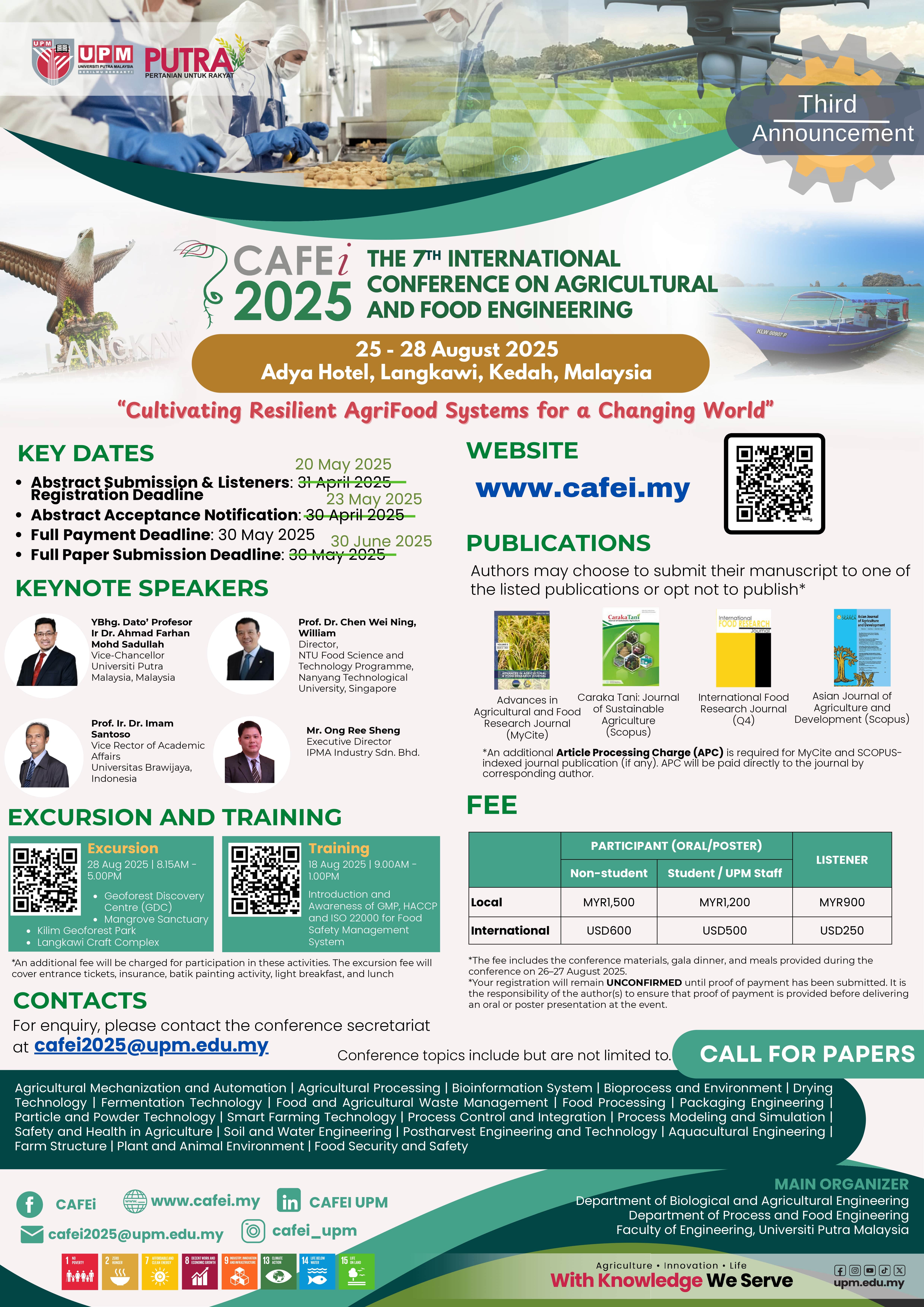The Effect of The Fertilizer Water Cycle on The Water Quality of The Hydroponic System
DOI:
https://doi.org/10.36877/aafrj.a0000578Abstract
Water quality changes in the hydroponic planting system planted with curly kale (kailan) were examined by measuring physiochemical analysis over three planting cycles. The water quality parameters measured included temperature, pH, Electrical Conductivity (EC), Biochemical Oxygen Demand (BOD), and Chemical Oxygen Demand (COD). In this study we also measured 13 elements in water samples which are Ammoniacal Nitrogen (AN), Phosphate (PO4), Sulphate (SO4), Nitrate (NO3), Boron (B), Calcium (Ca), Copper (Cu), Iron (Fe), Potassium (K), Magnesium (Mg), Manganese (Mn), Phosphorus (P) and Zinc (Zn). The analysis results compare the observed values with those recommended by the National Water Quality Standards (NWQS) Class IV (water quality standard for irrigation purposes). Chemical analysis of AN, B, Cu, Mn, Zn, COD, and BOD obtained from water sampling cycles 1–3 remained within the acceptable range. The determination of minerals was also relatively low compared to the NWQS value. However, the water analysis results for cycle 3 showed that Nitrate and Fe levels exceeded the maximum limit set by NWQS. Phosphate and K demonstrated a similar pattern, even though no fixed value exists for these parameters in the NWQS. The results of the water quality analysis during the cultivation process demonstrate that the fertilizer water can still be recycled, contributing to water conservation and pollution control.
Downloads
Published
How to Cite
Issue
Section
License
Copyright (c) 2025 Mohamad Jani Saad, Norlida Mohamed Hamim, Jamaliah Jaafar, Mohammad Abid Ahmad, Mohd Khairul Anuar Sumadi

This work is licensed under a Creative Commons Attribution-NonCommercial 4.0 International License.
Author(s) shall retain the copyright of their work and grant the Journal/Publisher right for the first publication with the work simultaneously licensed under:
Creative Commons Attribution-NonCommercial 4.0 International (CC BY-NC 4.0). This license allows for the copying, distribution and transmission of the work, provided the correct attribution of the original creator is stated. Adaptation and remixing are also permitted.

This broad license intends to facilitate free access to, as well as the unrestricted reuse of, original works of all types for non-commercial purposes.
The author(s) permits HH Publisher to publish this article that has not been submitted elsewhere.

.png)

.jpg)



